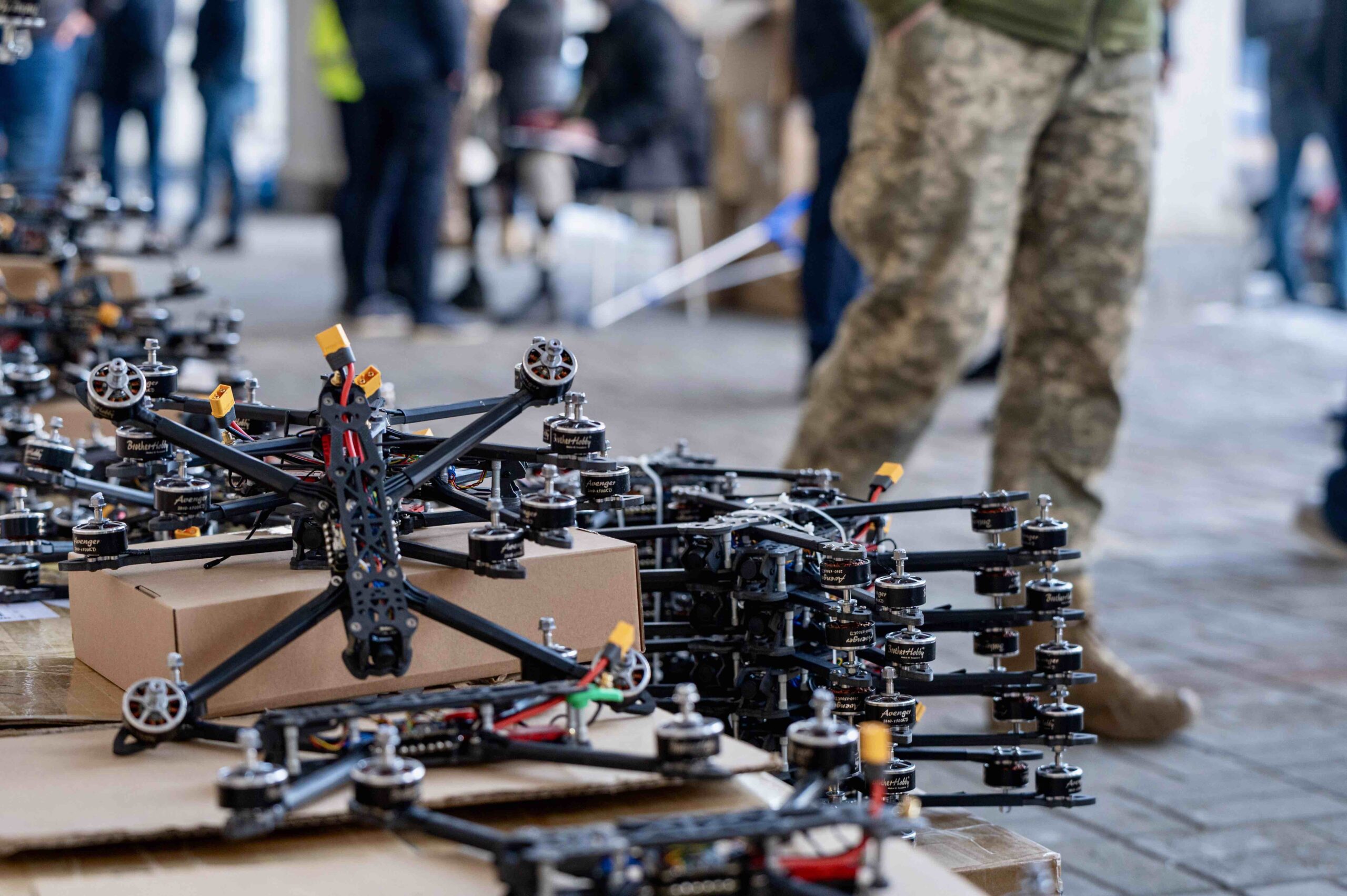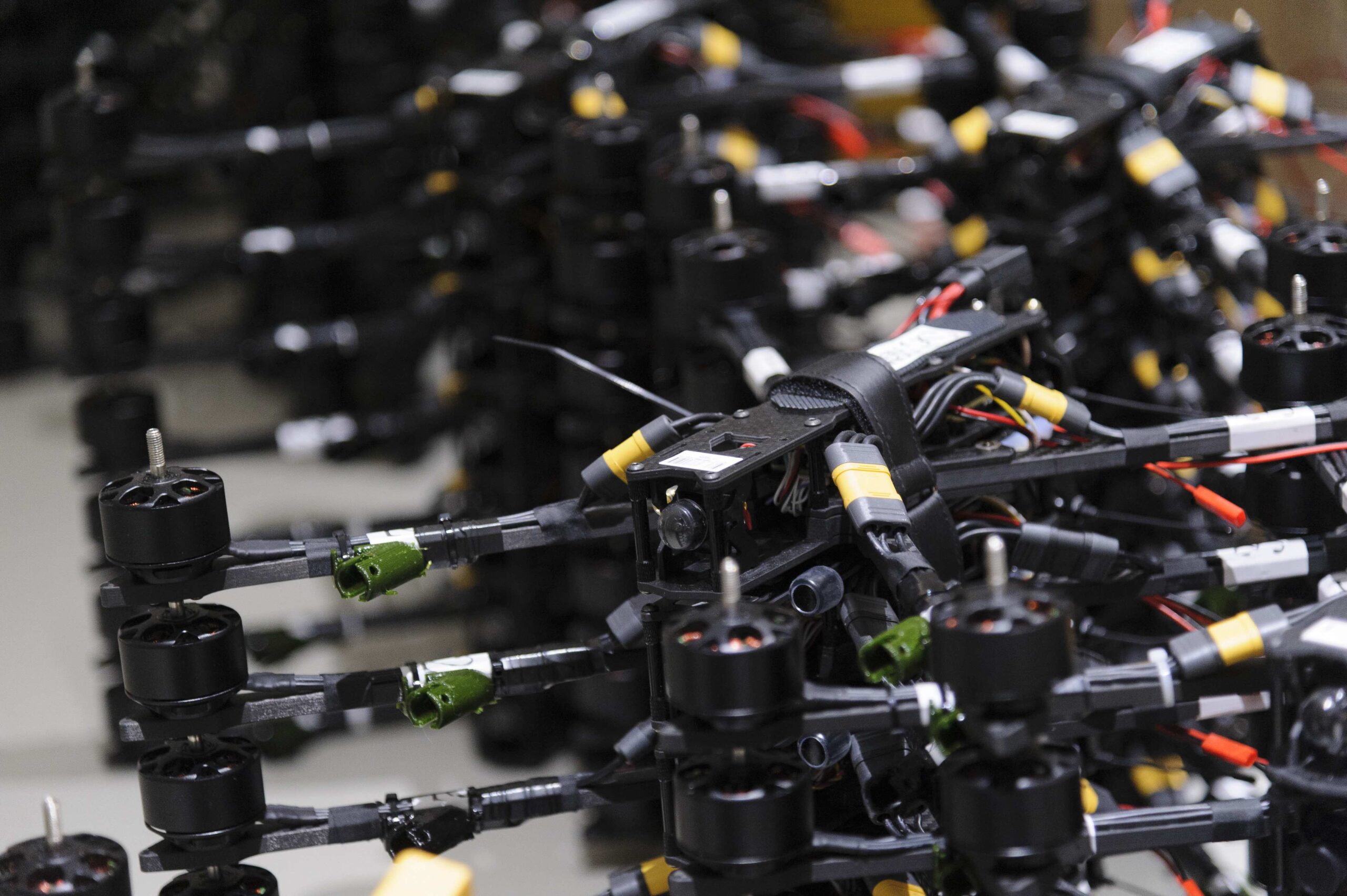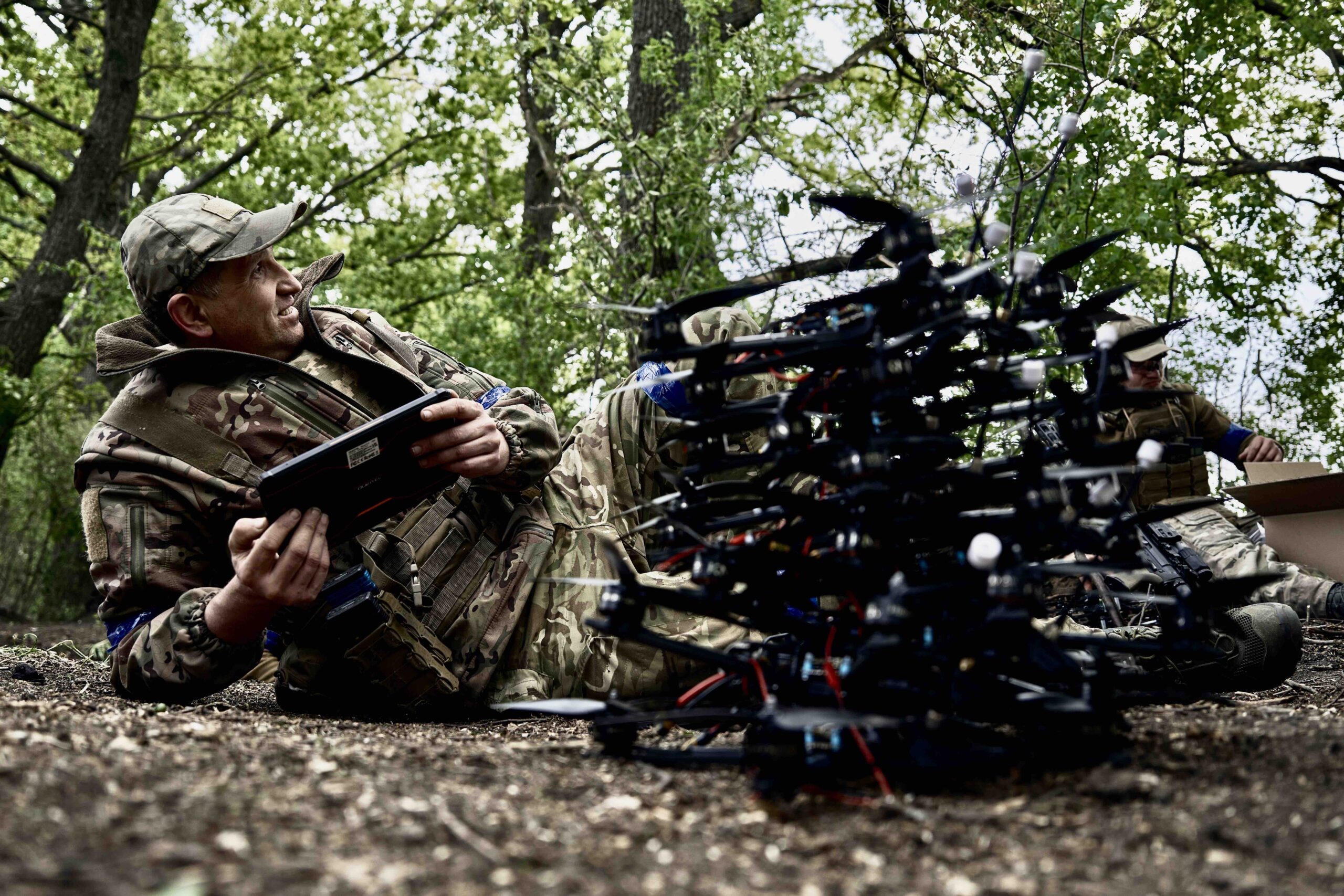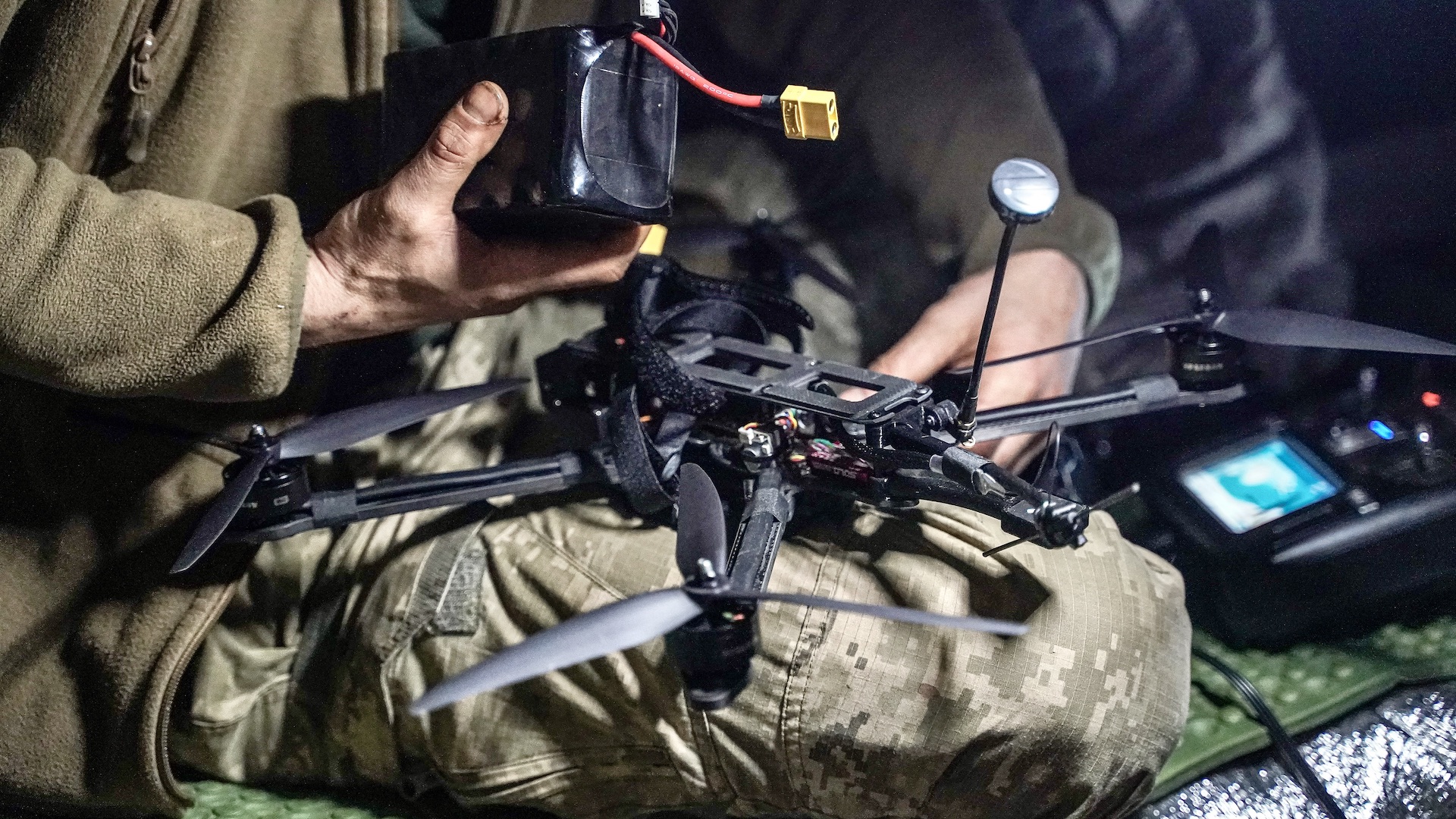A multi-national effort to provide Kyiv with additional first-person view (FPV) drones has officially begun, thanks to the launch of an industry competition. Led by the United Kingdom, the competition will dish out funds to successful bidders in hopes of delivering significant quantities FPV drones to Ukraine. These types of munitions have become critical on both sides of the front lines in the war in Ukraine; so much so that it has spurred an arms race for them.
The competition, led by the U.K. Ministry of Defense with assistance from the Latvian Ministry of Defense, was formally opened yesterday. The initiative is part of plans orchestrated by the Drone Capability Coalition, which was made public in February and is headed by the U.K. and Latvia. The Drone Capability Coalition has the aim of supplying Kyiv with over a million drones, predominately FPV types, by the end of the year.
Companies from across the coalition are encouraged to apply, which includes the U.K., Latvia, Australia, Canada, Denmark, Estonia, Germany, Lithuania, the Netherlands, Poland, Sweden, and Ukraine. In order to have submissions assessed as part of the competition, entrants must submit their proposals by July 1, per the U.K. Ministry of Defense solicitation.
“The UK and Latvia have opened the bidding for companies to supply FPV drones to Ukraine, on behalf of the Drone Capability Coalition,” the U.K. Ministry of Defense states. “This competition aims to produce these drones at scale and at an affordable price point, leveraging the strength of Western industry.”
According to the U.K. Ministry of Defense, the coalition aims to “procure up to 15 batches of first-person view racing quadcopter style drones, consisting of 20 drones each [300 in total] and potential associated options.” The total contract award for up to 300 FPV drones is valued at £300,000 (over $383,000 at current conversion rates.) This puts the cost at $1,000 ($1,277) per drone.
It also states that FPV drones “capable of carrying varying payloads depending on their propeller size” are desired. While specific payload requirements aren’t specified in the solicitation, FPV-type kamikaze drones, with improvised warheads, have been used heavily by both sides during the war — including against air and sea targets. Other Western countries, including the U.S., are working to acquire and hone their skills on FPV and FPV-like loitering munitions/kamikaze drones.

“First-person view drones have proven highly effective on the battlefield since Russia’s full-scale invasion,” the U.K. Ministry of Defense notes, “providing Ukrainian operators with situational awareness to target enemy positions, armored vehicles, and ships with explosive ordnance.”
The solicitation notes that for the successful bidder(s), FPV drone proposals “must be produced and dispatched for testing within three weeks of a contract award (expected the week commencing 12 August 2024). … Bidders are to ensure that their system meets all qualification questions & entry criteria prior to submitting their proposal.”
From there, the entries will be subjected to testing and evaluation, which will last up to three months. The intent is that, following those tests, bidders whose entries meet the necessary requirements will be considered for potential future production contracts of many thousands of drones.

Failure to submit a proposal by July 1 does not preclude interested companies from throwing their hat in the ring further down the road. As the Ministry of Defense highlights, “additional FPV competitions are expected to take place through 2024, building on the lessons learned from this first competition.”
Ukraine has no shortage of need for FPV drones. The relatively inexpensive, small, and highly maneuverable munitions have become something of a signature weapon during the conflict, both on and off the battlefield. In terms of their importance on the frontline, they are now talked about as being on par with artillery. They have also had major impacts on the use of heavy armored vehicles for both sides, including Russian turtle tanks and U.S.-supplied Abrams main battle tanks for Ukrainian forces.
Of course, the utility, and threat, of drones are by no means new, which The War Zone has pointed out for years. However, initiatives to field them at pace like those driven by the Drone Capability Coalition underscore how central they are to the current war in Ukraine, and will be in future conflicts.
The extent to which the drone types have been used by Ukrainian forces has increased supply needs; a demand which the Drone Capability Coalition, in part, aims to satisfy.

Ukraine itself has also vowed to up domestic production of FPV-type munitions. Last December, Kyiv announced that it plans to manufacture around one million FPV drones this year. Ukraine’s desperate need for these types of munitions has led officials to encourage civilian production of them at home, as part of a so-called “People’s Drone Project.” Russia has also increased its production of them, spurring an arms race for FPV drone production supremacy between Moscow and Kyiv.
Of course, the largest question mark hanging over the Drone Capability Coalition is how quickly it can supply Kyiv with large quantities of FPV drones. Given that the country’s own goal of producing a million FPV drones is highly ambitious, foreign-supplied examples will likely prove ever more critical as time goes on.
As the solicitation notes, the contract itself won’t start until early August, and will end in early September. This would put the first drones into the hands of Ukrainian operators in the Fall, at best. So while it may be helpful down the line, it doesn’t do much to help Ukraine’s current need for the drones. A common theme has throughout the conflict has been how traditional procurement methods are not responsive enough to the pace of change driven on the battlefield.
Regardless, this is just one of a number of initiatives underway to help Ukraine compete in the FPV drone space. The demand is absolutely extreme and any influx of these hugely impactful but small vehicles certainly helps.
Contact the author: oliver@thewarzone.com
